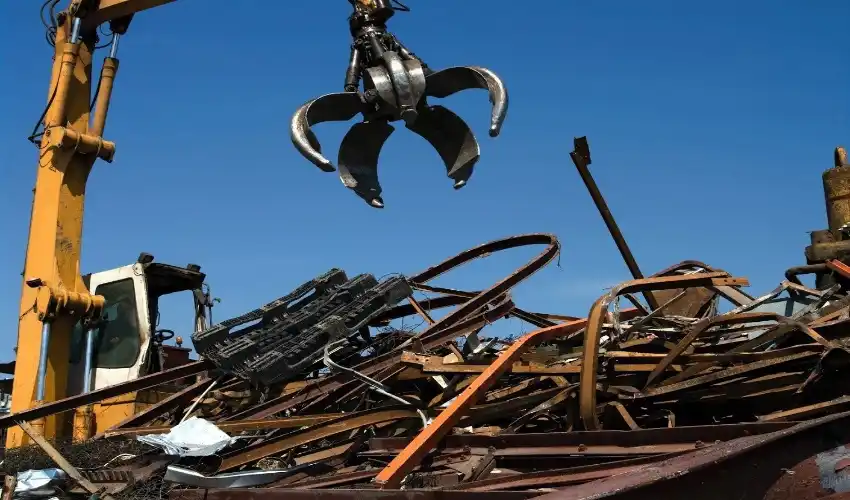
The Economic Impact of Scrap Steel Recycling
Scrap steel recycling plays a crucial role in the global economy, providing both environmental and financial benefits. As industries strive for sustainability, the economic impact of recycling scrap steel continues to grow, influencing various sectors, job markets, and energy consumption. This article explores how scrap steel recycling contributes to economic growth and stability.
Cost Savings and Energy Efficiency
One of the most significant economic advantages of bulk scrap metal for sale recycling is cost savings. Producing steel from recycled scrap requires significantly less energy compared to primary steel production. According to industry estimates, recycling steel saves approximately 60-74% of the energy needed to produce steel from raw materials. This reduction in energy consumption translates to lower operational costs for steel manufacturers and reduced dependency on expensive raw materials such as iron ore and coal.
Job Creation and Economic Growth
The scrap steel recycling industry generates employment opportunities in multiple sectors, including collection, processing, transportation, and manufacturing. In the United States alone, the scrap recycling industry supports over 500,000 jobs, contributing billions of dollars to the economy. These jobs span various skill levels, from manual labor to highly technical positions in metallurgy and material science.
Additionally, the industry stimulates local economies by supporting businesses that provide services and equipment for recycling operations. The steady demand for recycled steel ensures job security and encourages workforce development in regions with thriving recycling infrastructure.
Trade and Global Market Influence
Scrap steel is a valuable commodity in international trade. Many countries, including the United States, China, and European nations, export and import scrap steel to meet manufacturing demands. The global scrap steel trade helps balance supply and demand fluctuations, preventing shortages and price volatility in the steel industry.
For developing nations, importing recycled steel provides an affordable alternative to primary steel, allowing them to invest in infrastructure and industrial development without excessive costs. Additionally, trade in recycled materials reduces the need for extensive mining operations, conserving natural resources and minimizing environmental degradation.
Reduction of Landfill Waste and Environmental Costs
From an economic standpoint, recycling scrap steel reduces the burden on landfills and waste management systems. Disposing of large quantities of metal waste in landfills requires significant municipal funding, which can be redirected toward other essential services if recycling rates increase. By reducing landfill waste, local governments and businesses can save millions in disposal fees while simultaneously promoting a circular economy.
Moreover, reducing waste accumulation lowers environmental cleanup costs, as improperly disposed metal can contaminate soil and water sources. These indirect economic benefits contribute to long-term financial stability and sustainability for communities.
Infrastructure and Construction Advantages
Recycled steel is a fundamental component in the construction and automotive industries. The cost-effectiveness of recycled steel allows for more affordable infrastructure projects, including bridges, buildings, and transportation systems. Governments and private enterprises benefit from lower material costs, enabling large-scale development without exceeding budget constraints.
Furthermore, using recycled steel enhances project sustainability by reducing the carbon footprint associated with new construction. This aligns with green building initiatives and sustainable development goals, attracting investment from environmentally conscious businesses and policymakers.
Challenges and Future Opportunities
Despite its economic benefits, the scrap steel recycling industry faces challenges such as fluctuating scrap metal prices, contamination issues, and regulatory constraints. However, advancements in recycling technology, government incentives, and increased consumer awareness continue to drive innovation and efficiency in the industry.
The future of scrap steel recycling looks promising, with emerging markets embracing sustainable practices and technological improvements enhancing processing capabilities. As industries prioritize circular economy principles, the economic impact of scrap steel recycling will continue to strengthen, supporting economic growth, job creation, and resource conservation.
Conclusion
Scrap steel recycling is a powerful economic driver with far-reaching impacts on cost savings, job creation, trade, environmental sustainability, and infrastructure development. By investing in recycling initiatives and supporting sustainable practices, businesses and governments can harness the full economic potential of recycled steel, ensuring a resilient and resource-efficient future. As global demand for sustainable solutions rises, the role of scrap steel recycling in shaping economic stability will only continue to expand.